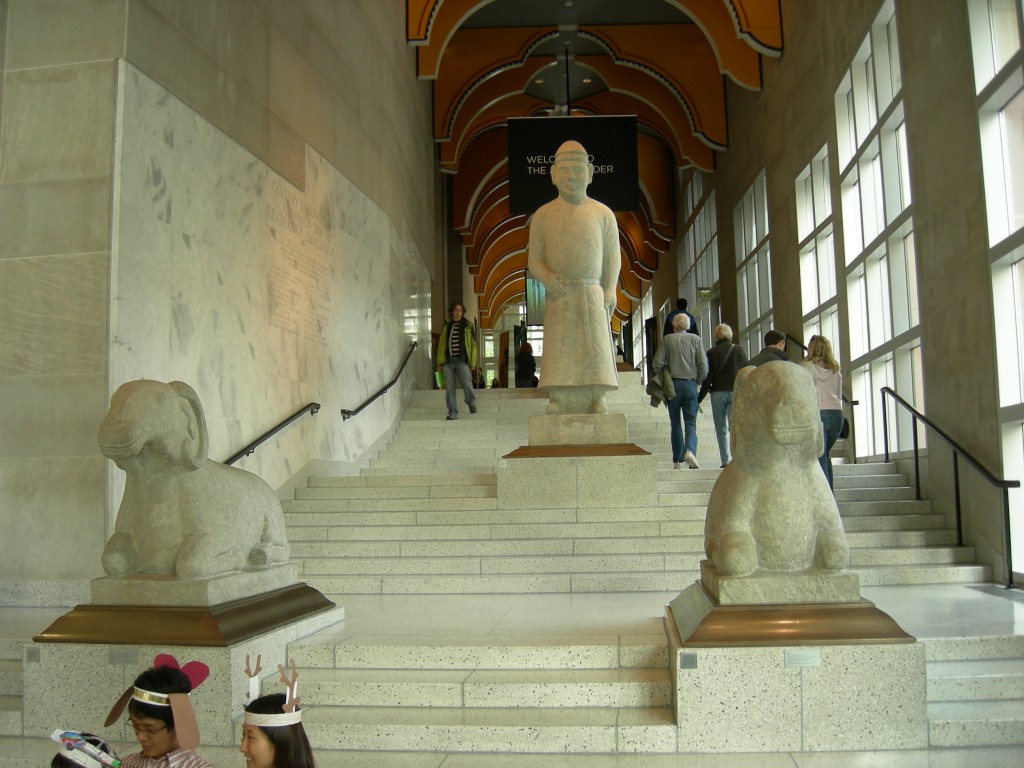By Bob Hicks

The Wall Street cowboys keep whoopin’ it up with other people’s money, the Dow dips and rises like a desperate trout on a line, the economists crunch numbers and announce happily that the recession’s over.
And in the real world, people brace for the worst. Jobs disappear. People take pay cuts and thank their lucky stars they didn’t get pink-slipped. Workers go on unpaid furloughs but keep the same old workloads. Basic benefits get deep-sixed. People simply drop out of the job market.
The state of Oregon trembles at the prospect of a half-billion-dollar shortage — a budget hole that will mean extraordinary cuts that are bound to include deep whacks in state cultural spending. This year’s crisis could make last year’s $1.8 million raid on the Oregon Cultural Trust seem like a mild practical joke. We ain’t seen nothin’ yet. Doors will shut.
Up north, they’re starting to swing already. In a bold and risky move, the Seattle Art Museum has announced that it will shut down most of its operations for two weeks early next year in a bid to cut costs enough to balance the budget. Janet I. Tu has the story in the Seattle Times. The cuts will also include a seven percent reduction in staffing and hefty salary cuts for top administrators.
“We are taking steps to remedy a tough situation,” said museum director Derrick Cartwright, who plans to take at least a fifteen percent salary cut. “I hope it will not impact the public.”
It will, of course. People will show up during those two weeks and the doors will be locked. Some people will be confused or disturbed or angry. Others will shrug their shoulders and possibly never show up again.
SAM and other major regional museums hold special roles in their communities. Even more than a symphony or opera or ballet or theater company, all of which routinely take breaks between performances, an art museum is looked on as a bulwark of reliability and stability. It’s expected to be open, except on Mondays. Only shutting down or curtailing a public library or a public school system — realities that more and more communities face — has a greater potential impact on a city’s sense of its cultural self.
On the other hand: When times are lean, what can you do but take extraordinary steps? SAM’s move is a calculated gamble. It’s more than budget-balancing, it’s shock therapy. Will potential donors see the move as tough, hard-headed pragmatism, or will they see an organization in trouble and tiptoe away? Obviously SAM is counting on the former: People will see an organization willing to make tough but necessary decisions and will want to put their money on the group that willingly faces reality. SAM could end up a “winner” in the increasingly difficult nonprofit funding race — but at what cost?
What do you think? Is this a smart move? How will it turn out? What can other cultural organizations learn from it, and is Seattle’s situation a harbinger of things to come in Portland? Let’s get the ideas rolling. Comments, please.
*
PHOTO: The “Art Ladder”, the main staircase of the original Robert Venturi portion of the Seattle Art Museum. The visible statues are Chinese funerary statues: two rams and a civilian guardian. May 5, 2007. Photo by Joe Mabel/Wikimedia Commons.